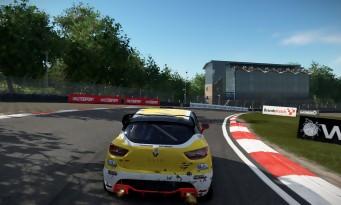 After a successful first episode, UK studio Slightly Mad got back to work on Project CARS 2, but using a slightly different method. Unsure of the potential of the first episode, the developers had used a concept of collaborative development by relying on the community of PC gamers. Via a platform called WMD (World of Mass Development), PC gamers - simulation enthusiasts and well equipped with wheels and other pedals - could buy the game at a reduced price and enjoy new alpha versions at regular intervals, while the developers had of quality feedback. This way of doing things was also used by Codemasters on DiRT Rally. If the method made it possible to give birth to a game with an exemplary finish, it had a disadvantage, that of requiring good equipment from the players to take full advantage of it.
After a successful first episode, UK studio Slightly Mad got back to work on Project CARS 2, but using a slightly different method. Unsure of the potential of the first episode, the developers had used a concept of collaborative development by relying on the community of PC gamers. Via a platform called WMD (World of Mass Development), PC gamers - simulation enthusiasts and well equipped with wheels and other pedals - could buy the game at a reduced price and enjoy new alpha versions at regular intervals, while the developers had of quality feedback. This way of doing things was also used by Codemasters on DiRT Rally. If the method made it possible to give birth to a game with an exemplary finish, it had a disadvantage, that of requiring good equipment from the players to take full advantage of it.
For Project CARS 2, Slightly Mad went eyeing the console market, offering an episode much more suited to the controller.
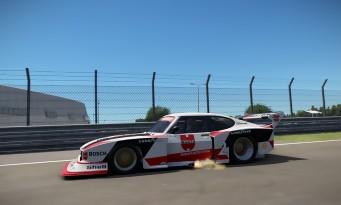 For Project CARS 2, Slightly Mad went eyeing the console market, offering an episode much more suited to the controller. But let the purists of the series be reassured, the DNA of the series has been preserved, so much so that we are dealing more with an evolution than a revolution. Regular players should therefore feel at home. Moreover, from the first laps, we see that we are navigating on familiar ground, with menus that have not really evolved. Always clear and simple, the interface consists of tiles (like Windows Phone) grouped together to form menus. Career mode, free racing, multiplayer and options are therefore easily accessible, without the need to get lost in countless sub-menus. Those allergic to the austere and clinical interface of Assetto Corsa will appreciate. This also shows that the content is on the rise, with more cars (a clever mix of road models and pure track cars), but also a fairly impressive number of circuits, some of which offer many possible routes.
For Project CARS 2, Slightly Mad went eyeing the console market, offering an episode much more suited to the controller. But let the purists of the series be reassured, the DNA of the series has been preserved, so much so that we are dealing more with an evolution than a revolution. Regular players should therefore feel at home. Moreover, from the first laps, we see that we are navigating on familiar ground, with menus that have not really evolved. Always clear and simple, the interface consists of tiles (like Windows Phone) grouped together to form menus. Career mode, free racing, multiplayer and options are therefore easily accessible, without the need to get lost in countless sub-menus. Those allergic to the austere and clinical interface of Assetto Corsa will appreciate. This also shows that the content is on the rise, with more cars (a clever mix of road models and pure track cars), but also a fairly impressive number of circuits, some of which offer many possible routes.
TASTES AND COLORS
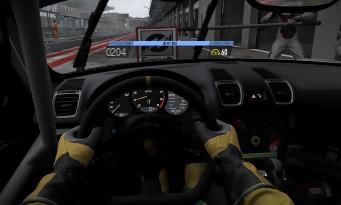 Another observation: the career mode has not changed much either, still offering the same structure as before, to the delight of lovers of realism. We therefore embody a young driver who will have to climb the hierarchy of disciplines, choosing the branch that interests us. Thus, to be able to drive an LMP1 prototype at the 24 Hours of Le Mans, you will have to go through many lower categories. We first started in the Clio Cup at the wheel of a prepared version of Renault's city car before climbing the ladder through GT4, GT3, GTE, then LMP2, and finally LMP1. A similar path will await those who want to finish in single-seaters, supertourism or even rallycross. Very immersive, this career also allows us to see the very large number of licenses owned by the studio. No less than 90% of the circuits are under license (except for Monaco which has been renamed), and each car has the official liveries of the many teams that operate it. The Ford Capri Turbo sports the dress of the Zakspeed structure, GT3 enthusiasts will be able to race in the colors of the Belgian WRT, AF Corse or Bentley Racing, while in GTE, we will find Aston Martin Racing. A real pleasure, especially since we even have subtle variations between the different vehicles of the same team, which will allow you to drive the same car as your favorite driver. We will note all the same the absence of hierarchy between the stables, each team giving us a place in its ranks when we are eligible for the category. You can therefore drive for a top team by being a complete rookie.
Another observation: the career mode has not changed much either, still offering the same structure as before, to the delight of lovers of realism. We therefore embody a young driver who will have to climb the hierarchy of disciplines, choosing the branch that interests us. Thus, to be able to drive an LMP1 prototype at the 24 Hours of Le Mans, you will have to go through many lower categories. We first started in the Clio Cup at the wheel of a prepared version of Renault's city car before climbing the ladder through GT4, GT3, GTE, then LMP2, and finally LMP1. A similar path will await those who want to finish in single-seaters, supertourism or even rallycross. Very immersive, this career also allows us to see the very large number of licenses owned by the studio. No less than 90% of the circuits are under license (except for Monaco which has been renamed), and each car has the official liveries of the many teams that operate it. The Ford Capri Turbo sports the dress of the Zakspeed structure, GT3 enthusiasts will be able to race in the colors of the Belgian WRT, AF Corse or Bentley Racing, while in GTE, we will find Aston Martin Racing. A real pleasure, especially since we even have subtle variations between the different vehicles of the same team, which will allow you to drive the same car as your favorite driver. We will note all the same the absence of hierarchy between the stables, each team giving us a place in its ranks when we are eligible for the category. You can therefore drive for a top team by being a complete rookie.
Satan and the devil
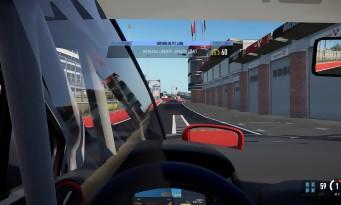 Each championship is for once very well balanced and the chances of victory remain more or less the same, whatever car and team you choose. The championships are relatively identical, with a number of events all of which are broken down into a practice session, a qualifying phase and finally a race. Although you can set the duration of the race quite precisely, this is not the case for practice or qualifying. If it is possible to skip the end of practice, the same operation in qualifying leads to undesirable side effects. Having managed to stay two seconds ahead of the first after three laps in a fifteen-minute qualifying session, we decided to skip the end of the exercise and shorten the exercise. The result is that we ended up in the last place on the grid, with all the competitors having miraculously increased their pace. After having started again and this time waiting for the end of the session, we then kept the pole. This pattern has repeated itself each time we have tried the experiment, to the point that we still do not know if it is a bug or a choice of the developers who want to "punish" those who fly over exercise too quickly. Similarly, we were able to witness some shady bugs during the formation lap where we took - among other things - a penalty for overtaking a car that had ended up in the wall. Past these quirks and once in the race, the sensations distilled by the game are good, although the physics and the precision of the force feedback in the steering wheel are inferior to Assetto Corsa, and to DiRT Rally when venturing on Earth. Nevertheless, and this is undeniably a strength of the game, it is clearly easier to have fun while driving with a controller than in the previous opus. Although there are no buttons and you have to use the keyboard in addition (especially if you like to put everything manually), the steering remains precise and the haptic feedback is of a rare quality on a simple gamepad, which provides ample information about the status of our car or the track.
Each championship is for once very well balanced and the chances of victory remain more or less the same, whatever car and team you choose. The championships are relatively identical, with a number of events all of which are broken down into a practice session, a qualifying phase and finally a race. Although you can set the duration of the race quite precisely, this is not the case for practice or qualifying. If it is possible to skip the end of practice, the same operation in qualifying leads to undesirable side effects. Having managed to stay two seconds ahead of the first after three laps in a fifteen-minute qualifying session, we decided to skip the end of the exercise and shorten the exercise. The result is that we ended up in the last place on the grid, with all the competitors having miraculously increased their pace. After having started again and this time waiting for the end of the session, we then kept the pole. This pattern has repeated itself each time we have tried the experiment, to the point that we still do not know if it is a bug or a choice of the developers who want to "punish" those who fly over exercise too quickly. Similarly, we were able to witness some shady bugs during the formation lap where we took - among other things - a penalty for overtaking a car that had ended up in the wall. Past these quirks and once in the race, the sensations distilled by the game are good, although the physics and the precision of the force feedback in the steering wheel are inferior to Assetto Corsa, and to DiRT Rally when venturing on Earth. Nevertheless, and this is undeniably a strength of the game, it is clearly easier to have fun while driving with a controller than in the previous opus. Although there are no buttons and you have to use the keyboard in addition (especially if you like to put everything manually), the steering remains precise and the haptic feedback is of a rare quality on a simple gamepad, which provides ample information about the status of our car or the track.
Once in the race, the sensations distilled by the game are good, although the physics and the accuracy of the power return in the steering wheel are lower than Assetto Corsa and DiRT Rally when venturing on land.
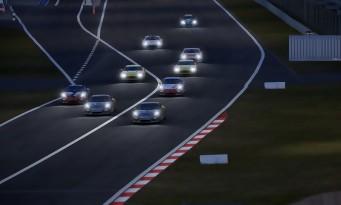 The game still offers an excellent damage system, and although the latter is really very permissive, you will sometimes have to deal with random breakdowns. During peloton races, the AI offers a fairly honest behavior as long as you push the difficulty knob above 70%, while you discover a setting for aggressiveness, which should appeal to pare enthusiasts. - dented shocks and crumpled sheet metal. If on the track we did not touch the basic setting, we increased the gauge during the rallycross races in order to benefit from a little more realism. On this point the game is very strong, because by spending enough time on these settings you end up having a very correct AI which avoids doing the traffic jam, even if you are far from having the feeling of racing with it. a real gamer. An observation that is all the more true when the weather varies. It has thus been noted that the brightness has very little influence on the lap times of the AI, capable of driving without seeing anything, while in the event of rain the reactions are more random. On a wet or dry track we always had the advantage, whereas when the road literally disappears under water, the AI is unbeatable. We even got dropped off in a straight line on a track literally transformed into a lake. In these kinds of conditions, you will be advised to deactivate the traction control which normally provides valuable assistance, but which then becomes totally ineffective. We even got stranded in a puddle that was too deep, the grip being so non-existent that the traction control simply cut the engine, completely preventing us from moving forward. Despite these setbacks, the rain makes it possible to take advantage of the brilliant Livetrack system which takes physics into account to create puddles of water depending on the topography of the circuit. Particularly sensitive when the track is dry, the system forces us to modify the trajectories to avoid aquaplaning in puddles, and wet areas for braking.
The game still offers an excellent damage system, and although the latter is really very permissive, you will sometimes have to deal with random breakdowns. During peloton races, the AI offers a fairly honest behavior as long as you push the difficulty knob above 70%, while you discover a setting for aggressiveness, which should appeal to pare enthusiasts. - dented shocks and crumpled sheet metal. If on the track we did not touch the basic setting, we increased the gauge during the rallycross races in order to benefit from a little more realism. On this point the game is very strong, because by spending enough time on these settings you end up having a very correct AI which avoids doing the traffic jam, even if you are far from having the feeling of racing with it. a real gamer. An observation that is all the more true when the weather varies. It has thus been noted that the brightness has very little influence on the lap times of the AI, capable of driving without seeing anything, while in the event of rain the reactions are more random. On a wet or dry track we always had the advantage, whereas when the road literally disappears under water, the AI is unbeatable. We even got dropped off in a straight line on a track literally transformed into a lake. In these kinds of conditions, you will be advised to deactivate the traction control which normally provides valuable assistance, but which then becomes totally ineffective. We even got stranded in a puddle that was too deep, the grip being so non-existent that the traction control simply cut the engine, completely preventing us from moving forward. Despite these setbacks, the rain makes it possible to take advantage of the brilliant Livetrack system which takes physics into account to create puddles of water depending on the topography of the circuit. Particularly sensitive when the track is dry, the system forces us to modify the trajectories to avoid aquaplaning in puddles, and wet areas for braking.
WHO ROLL MECHANICS
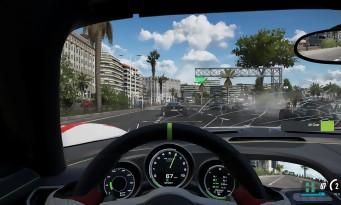 Whether it's sunny, raining or foggy, Project CARS 2 has a really nice level of graphics. From the clouds of water droplets kicked up by your opponents to the sun glinting off the windshield, Slightly Mad's game is clearly at the top of the league when it comes to graphical fidelity, with very well modeled cars and tracks. , including when looking at interiors in VR. We recall in passing that the game is compatible with the Vive, and the Rift, but that it is unfortunately not available on PlayStation VR due to the limited capacities of the hardware. Quite disappointingly, Project CARS suffers from a veritable dump of various and varied bugs that can quickly piss off the player. In addition to the issues mentioned, we encountered numerous collision bugs, mainly in the pitlane, as well as miscellaneous issues. We have several times received penalties for excessive speed in the pits while we were on the track, the game detecting a return to the garage as soon as we get a little too close to the deceleration lane. Similarly, we were disqualified after being rammed by an AI during the formation lap. Finally, many display bugs also persist, such as when you started a race with a completely cracked windshield.
Whether it's sunny, raining or foggy, Project CARS 2 has a really nice level of graphics. From the clouds of water droplets kicked up by your opponents to the sun glinting off the windshield, Slightly Mad's game is clearly at the top of the league when it comes to graphical fidelity, with very well modeled cars and tracks. , including when looking at interiors in VR. We recall in passing that the game is compatible with the Vive, and the Rift, but that it is unfortunately not available on PlayStation VR due to the limited capacities of the hardware. Quite disappointingly, Project CARS suffers from a veritable dump of various and varied bugs that can quickly piss off the player. In addition to the issues mentioned, we encountered numerous collision bugs, mainly in the pitlane, as well as miscellaneous issues. We have several times received penalties for excessive speed in the pits while we were on the track, the game detecting a return to the garage as soon as we get a little too close to the deceleration lane. Similarly, we were disqualified after being rammed by an AI during the formation lap. Finally, many display bugs also persist, such as when you started a race with a completely cracked windshield.


























